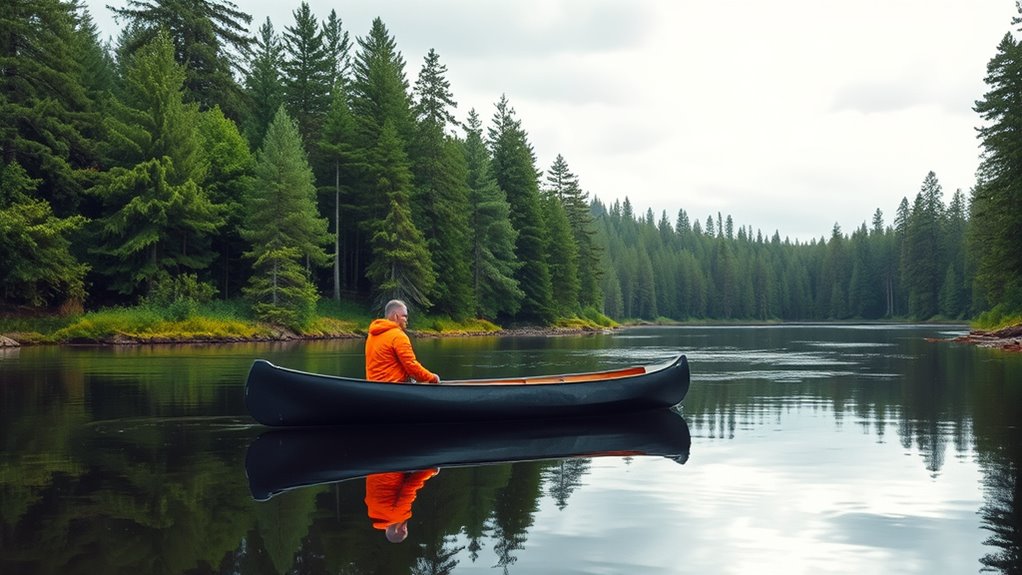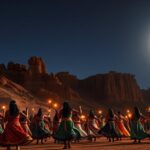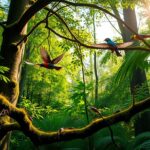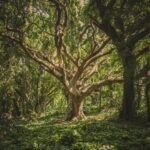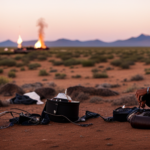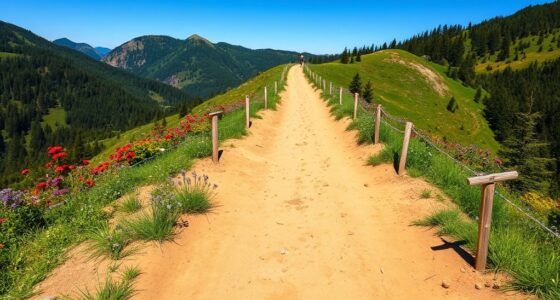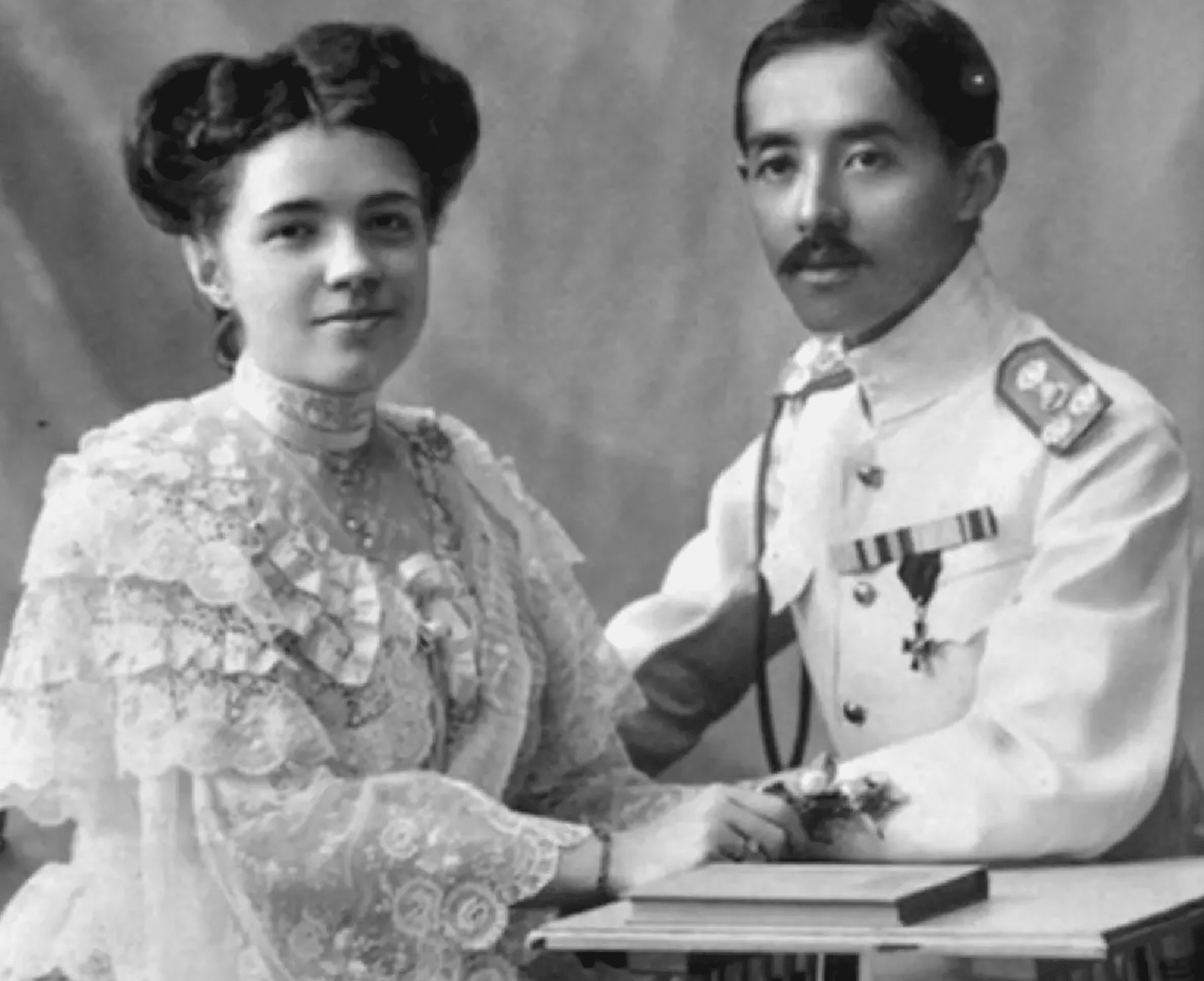In northern Finland, the river that sang back symbolizes more than just water; it embodies indigenous stories, ecological wisdom, and cultural identity. As you navigate its currents, you listen to ancient voices that remind you of the sacred bond between humans and nature. Respecting these stories helps preserve both the environment and community traditions. If you keep exploring, you’ll uncover how this river continues to inspire collective responsibility and ecological harmony through timeless canoe conversations.
Key Takeaways
- The story emphasizes the deep cultural connection between indigenous communities and the flowing, living river in Northern Finland.
- Canoe conversations serve as a method of preserving and sharing local folklore, traditions, and ecological knowledge.
- The journey highlights the importance of respecting the river’s ecological health as integral to cultural storytelling and community identity.
- Indigenous practices in Northern Finland promote sustainable living, reinforcing the spiritual and environmental significance of the river.
- Protecting the river’s stories and ecosystem reflects collective responsibility, fostering cultural continuity and ecological stewardship.
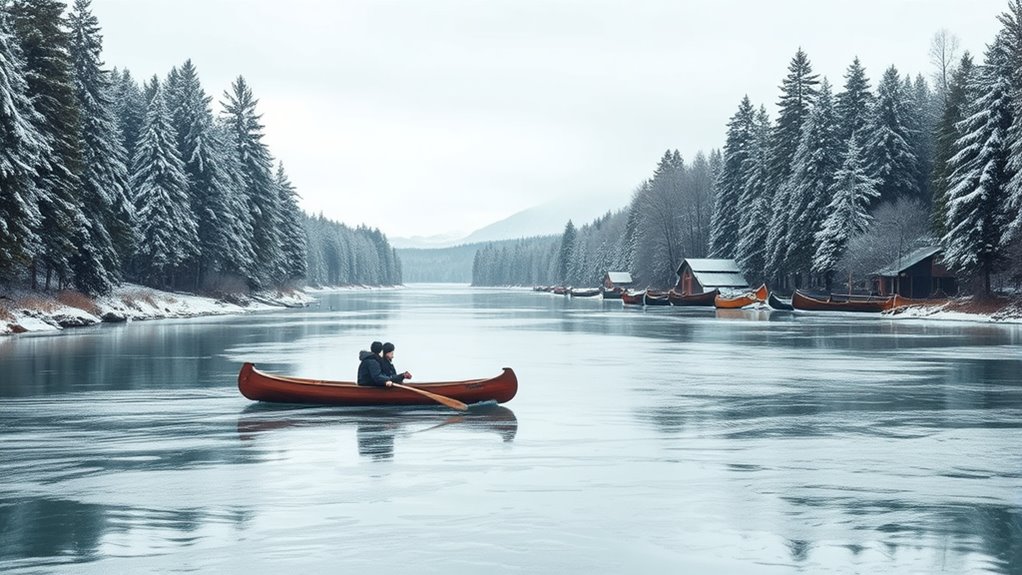
Deep in the heart of the valley, the river seemed to come alive, as if it remembered a song long forgotten. You paddle gently, feeling the cool flow ripple beneath your canoe, and realize that this river isn’t just a body of water—it’s a living storybook of indigenous folklore. For generations, local communities have woven their tales and traditions around these waters, believing the river holds spirits and ancestors who whisper their secrets in the current. As you glide along, you’re reminded that your journey isn’t just about exploration; it’s about listening and respecting the stories that the land and water have preserved. These stories are essential, shaping the community’s identity and guiding their relationship with nature. You’re also aware that this sense of connection emphasizes the importance of ecological preservation. The river isn’t just a scenic route—it’s a fragile ecosystem, teeming with life, from tiny invertebrates to soaring birds. Your presence and actions can either support or threaten this delicate balance. Recognizing this, you make a conscious effort to minimize your impact, knowing that the health of the river directly influences the stories it holds. Indigenous folklore often highlights the sacred bond between humans and nature, emphasizing stewardship rather than ownership. When you see the lush banks and pristine waters, you understand that preserving this environment isn’t just about conservation; it’s about honoring the legacy of those who came before and ensuring future generations can hear the river’s song. Every paddle stroke echoes a respect for the land’s history and the ecological systems that sustain it. As you continue your journey, you might notice how local traditions influence conservation efforts. Indigenous communities here have long practiced sustainable ways of living, mindful of their environmental footprint. Their wisdom reinforces a crucial lesson: ecological preservation isn’t a modern invention but a continuation of ancient practices rooted in indigenous folklore. By listening to these stories and respecting the land, you’re participating in a shared responsibility—one that recognizes the intrinsic value of nature’s voice. The river’s song, once thought lost, now echoes clearer because of this collective effort. In this northern landscape, you learn that ecological preservation and indigenous folklore aren’t separate paths but intertwined stories that sustain both culture and environment. As the canoe drifts onward, the river’s melody stays with you—an ancient lullaby reminding you that caring for nature is, ultimately, caring for the stories and spirits that define this remarkable place. Additionally, understanding the significance of ecological preservation as highlighted in local traditions underscores the importance of protecting such vital ecosystems.
Frequently Asked Questions
What Inspired the Title “The River That Sang Back”?
You might wonder what inspired the title “The River That Sang Back.” It draws from mythical origins, suggesting the river has a life of its own, almost alive with stories. The musical symbolism hints at the river’s gentle flow and the sounds it makes, like nature’s own song. This title invites you to see the river not just as water, but as a storyteller, echoing ancient melodies and legends.
How Do Canoe Conversations Influence Local Community Life?
Did you know that over 75% of local communities engage in canoe conversations regularly? These exchanges foster local storytelling, strengthening bonds and preserving traditions. When you participate, you become part of a vibrant network that nurtures community bonding. Canoe conversations create a space for shared experiences, making residents feel connected and valued. By embracing these moments, you help keep cultural stories alive and build a more united, resilient community.
Are There Specific Traditions Linked to Canoeing in Northern Finland?
You’ll find that canoeing in Northern Finland is deeply rooted in Indigenous rituals and traditions. During canoe festivals, locals celebrate their heritage through singing, storytelling, and ceremonial practices on the water. These traditions honor nature and ancestors, reinforcing community bonds. Participating in these festivals allows you to experience a unique cultural connection, blending ancient rituals with modern celebrations, and gaining a deeper appreciation for the region’s rich Indigenous history.
What Environmental Challenges Does the River Face Today?
You should know that the river faces serious environmental challenges today. Pollution concerns rise from industrial runoff and waste, threatening water quality and local ecosystems. Habitat loss also occurs as development and deforestation encroach on the river’s natural surroundings. These issues disrupt wildlife and threaten the river’s health, making it essential for conservation efforts to address pollution and protect habitats, ensuring the river’s vitality for future generations.
How Can Outsiders Participate in Preserving This Cultural Heritage?
You can actively participate in preserving this cultural heritage by engaging in responsible tourism and promoting cultural exchange. Be mindful of your impact on the environment, avoiding activities that harm the river or local traditions. Support local guides and artisans, learn about their customs, and share respectful stories. Your involvement helps raise awareness and fosters appreciation, ensuring future generations can enjoy and preserve this unique cultural landscape.
Conclusion
As you paddle along Finland’s winding rivers, remember they hold stories waiting to be heard. Imagine a local elder sharing tales of the river’s song, connecting generations through its melodies. By listening closely, you realize these waterways aren’t just paths—they’re living conversations. Just like in a small village where the river’s song helped neighbors unite during tough times, your attentiveness can foster deeper understanding and harmony with nature and each other.

